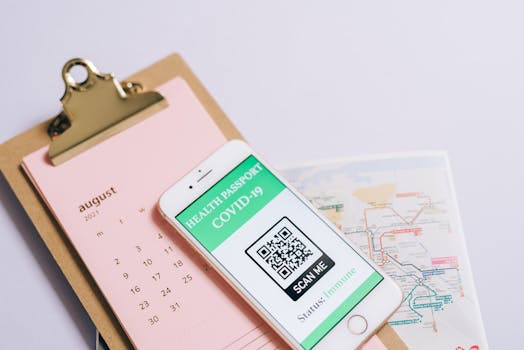Creating travel materials is an essential part of setting up any journey, whether for business or leisure. Well-organized and visually appealing materials help travelers stay informed and excited about their adventures. They can also facilitate smoother experiences and better interactions.
In the age of digital information, the importance of tangible travel materials remains strong. Printed guides, brochures, and itineraries offer easy reference points, especially in destinations where internet connectivity may be unreliable. Additionally, customized travel materials add a personal touch to any trip.
This article will guide you through the steps of creating effective travel materials. From understanding your audience to designing engaging content, these strategies will improve traveler experience and satisfaction. Let’s delve into the world of travel material creation!
Understand Your Audience
Before you start creating travel materials, it’s crucial to know who your audience is. Determine the demographic you are targeting, such as families, solo travelers, or business professionals. By understanding their needs, you can tailor your materials suitably.
Identifying your audience’s preferences will help inform tone, style, and content. For instance, families may appreciate kid-friendly attractions, while solo travelers might look for adventure activities. Catering your materials will enhance their relevance.
Conduct surveys or interviews with potential travelers to collect data on their interests. This direct feedback can provide invaluable insights. Moreover, research travel trends to stay updated with what attracts modern travelers.
Once you pinpoint your target audience, consider what format works best for them. Do they prefer digital formats or printed materials? Knowing this aids in making effective decisions during the creation process.
Adapting your travel materials to meet the specific needs of your target audience will ultimately lead to a more engaged and satisfied traveler. This personalized approach can enhance their overall experience.
Gather Essential Information
After understanding your audience, it’s time to gather necessary information for inclusion. This should encompass accommodation options, local attractions, dining establishments, and transportation details. Accuracy is paramount; verify all information thoroughly.
Consider creating a comprehensive list or spreadsheet to organize all details you intend to include. This will assist in structuring your travel materials effectively. It’s beneficial to separate different sections for easy navigation.
Incorporating maps and navigation tips can enrich your travel materials. Highlight significant landmarks and popular routes, allowing travelers to explore confidently. Details on local customs or cultural nuances can also guide respectful interactions.
Additionally, ensure contact information for venues and attractions is accurate. Travelers will appreciate having reliable contact details, especially in cases of emergencies or booking inquiries. Consistency in formatting this section fosters professionalism.
Lastly, accumulate information about local events or festivals happening during travel dates. Including this element can entice travelers to engage more with the local culture during their visit. Keep this information fresh to maximize relevance.
Create Engaging Content
The next step is to craft compelling content. Use a friendly, conversational tone that resonates with your target audience while maintaining professionalism. Clear language enhances understanding and encourages exploration.
Start with catchy headlines that capture attention. Provide concise yet informative descriptions for each attraction or service, encouraging potential visitors. Utilizing storytelling elements can create an emotional connection with the content.
Incorporate visuals like photographs and illustrations throughout your materials. High-quality images increase engagement and make the content more visually appealing. Travelers are often drawn to captivating visuals that showcase experiences.
Furthermore, consider using bullet points or numbering to break down information into digestible pieces. Clarity and succinctness will assist readers in finding critical details quickly. This layout enhances user experience significantly.
Lastly, aim to produce a consistent and unified style throughout your materials. Utilize similar fonts, colors, and layouts to provide coherence. A polished, professional appearance reflects well on the travel experience as a whole.
Design Visually Appealing Materials
Visual design plays a critical role in how effective your travel materials are. Invest time in creating clean, organized layouts. Well-structured designs help guide the reader’s eye and enhance comprehension.
Choosing complementary colors can also impact the aesthetic quality of your materials. Color schemes should align with the theme of the destination and evoke the right emotions—calming tones for beach destinations, for example.
Utilize easy-to-read fonts that maintain legibility. Ensure that the size is appropriate for both printed and digital formats. Avoid overly complex fonts that may detract from the information being shared.
Incorporating white space is essential for a clean design. A cluttered layout can overwhelm readers and discourage engagement. Use margins and spacing wisely to create a balanced and inviting appearance.
Finally, test your designs on different devices and mediums. Your materials should work seamlessly whether printed or viewed on a tablet. This adaptability will ensure a positive experience for all users.
Incorporate Practical Features
Adding practical features to your travel materials can significantly enhance user experience. Consider including checklists that travelers can use for packing or activities to avoid overlooking important items or experiences.
Providing space for notes can also help users jot down personal observations or suggestions. This interactive element encourages engagement and fosters a sense of ownership over their travel experience.
Incorporate QR codes or links to related websites. These provide quick access to additional information about specific attractions or services, enhancing the knowledge base travelers can access during their trip.
Tables or charts displaying vital information can also add value, such as pricing, operating hours, or proximity to other attractions. Visual representation of data often makes it easier to digest.
Finally, provide a glossary of local terms or phrases. This small feature can empower travelers, making them feel more connected to the culture they are visiting. Empowering users enriches their overall experience.
Distribute Your Travel Materials
Once your travel materials are complete, focus on the distribution phase. Consider several channels to reach your audience effectively. Digital formats can be easily shared online through emails or social media platforms.
For printed materials, identify key locations where distribution would be most effective. Local hotels, airports, and tourist information centers can serve as excellent venues to connect with potential travelers.
Evaluate partnerships with travel agencies or local businesses that can distribute materials on your behalf. This collaboration can expand your reach significantly, connecting you with a broader audience.
Utilize events and travel fairs as platforms to promote your materials directly to interested individuals. Face-to-face interactions can foster relationships and encourage potential customers to explore your offerings.
Finally, encourage feedback from your audience. Understanding the effectiveness of your materials will allow you to make improvements in future iterations. Continuous development will help you stay aligned with traveler needs.
Conclusion
Creating engaging and practical travel materials is vital for enhancing the travel experience. By understanding your audience, gathering valuable information, and designing captivating contents, you can significantly improve travelers’ satisfaction.
Implementing practical features and distributing materials through various channels will ensure they reach the intended audience effectively. Personal touches and attention to detail can facilitate better connections with travelers.
Ultimately, embracing these strategies will not only enhance the information travelers receive but also inspire their journeys. With the right materials, travelers are more likely to explore and engage with new destinations.


